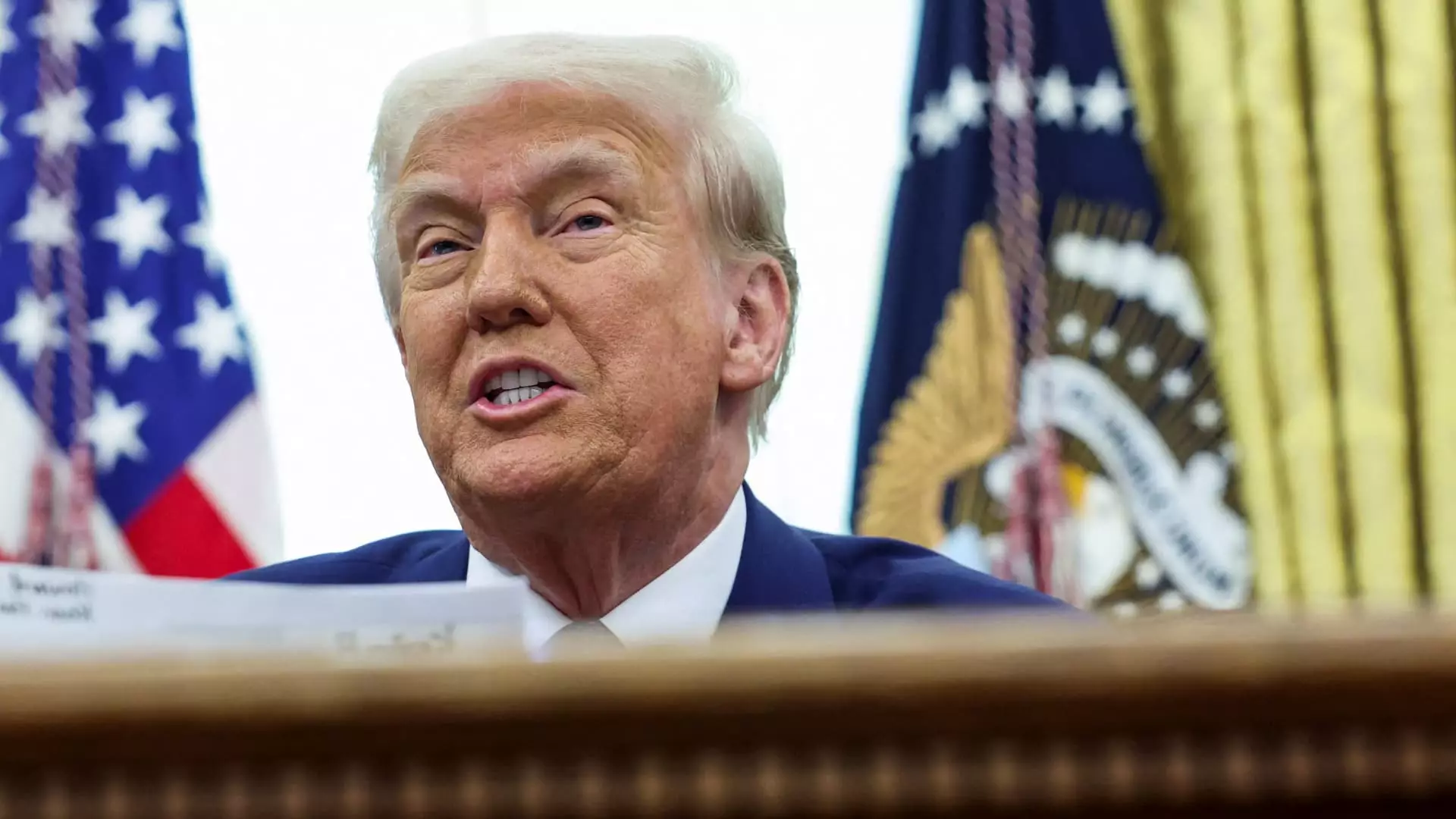The recent remarks made by President Donald Trump have sparked a significant decline in defense stocks, highlighting a precarious juncture in U.S. military funding policy. On a Thursday afternoon, Trump floated the idea of reducing defense expenditures by a staggering fifty percent, a notion that, if pursued, would radically alter the landscape of U.S. defense investment and capabilities. This article delves into the implications of these statements, the current state of defense spending, and the mixed messages emanating from the administration.
During discussions on potential diplomatic conferences with Russia and China, Trump expressed a vision that could see the U.S. redirect funds from the military towards other pressing societal needs. His statements emphasized a future meeting with Xi Jinping and Vladimir Putin, in which he proposed substantial cuts in military budgets, suggesting a collaborative approach to global security and cost efficiency. He stated, “There’s no reason for us to be spending almost $1 trillion on the military,” signaling a potential pivot from traditional Cold War-era spending patterns to a more negotiated stance among global powers.
While the sentiment of re-evaluating defense spending aligns with broader calls for fiscal responsibility, the abrupt shift from robust military support to drastic cuts has raised eyebrows among investors and policymakers alike. The proposed reduction stands in stark contrast to Trump’s past assertions regarding the necessity of a fortified military presence, adding layers of complexity to his policy stance.
Immediate repercussions were felt on Wall Street, with leading defense contractors experiencing notable declines in their stock prices. Lockheed Martin, Northrop Grumman, and General Dynamics saw reductions of 1.6%, 3.4%, and 2.1%, respectively. Such market behavior underscores the investors’ anxiety regarding the reliability of defense-related contracts and future profitability amid uncertain funding trajectories.
Investors are particularly concerned about Trump’s inconsistent messaging regarding military expenditures. Throughout his presidency and into his 2024 campaign, he has fluctuated between advocating for a strong military investment—highlighted by his plans for projects like the “Iron Dome of America”—and proposing sharp reductions in those same expenditures. This dichotomy creates an environment of confusion and skepticism among defense stockholders, with analysts noting that current sentiment varies greatly and could lead to significant volatility.
The proposed reductions in defense spending could have wider implications beyond mere stock market reactions. Critics argue that halting military investment at a time of geopolitical tension, particularly with adversaries like Russia and China, could weaken the U.S. defense posture. Conversely, proponents of spending cuts argue it is essential for reallocating funds to domestic needs that could bolster social services, infrastructure, and other vital sectors.
As America grapples with its national priorities, the balancing act between maintaining military prowess and addressing social issues continues to be a contentious debate. How President Trump navigates this complex landscape of defense spending will not only shape military strategy but also influence perceptions of U.S. global leadership and security.
President Trump’s recent comments serve as a pivotal moment in U.S. defense policy, prompting both market reactions and broader discussions about military expenditure objectives. As the administration continues to convey mixed messages, stakeholders across sectors must remain alert to the evolving narrative surrounding U.S. defense spending. Whether these proposed changes materialize will undoubtedly affect future diplomatic relations and the financial landscape surrounding defense industries. Ultimately, the need for clarity and consistency in policy is paramount as the nation seeks to balance military readiness with socio-economic responsibilities.

